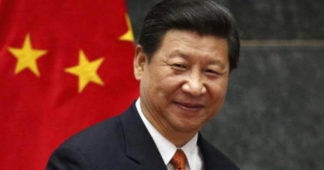by
Contemporary capitalism is a capitalism of generalized monopolies. What I mean by that is that monopolies no longer form islands (important as they may be) in an ocean of corporations that are not monopolies—and consequently are relatively autonomous—but an integrated system, and consequently now tightly control all productive systems. Small and medium-sized companies, and even large ones that are not themselves formally owned by the oligopolies, are enclosed in networks of control established by the monopolies upstream and downstream. Consequently, their margin of autonomy has shrunk considerably. These production units have become subcontractors for the monopolies. This system of generalized monopolies is the result of a new stage in the centralization of capital in the countries of the triad that developed in the 1980s and ’90s.
Simultaneously, these generalized monopolies dominate the world economy. Globalization is the name that they themselves have given to the imperatives through which they exercise their control over the productive systems of world capitalism’s peripheries (the entire world beyond the partners of the triad). This is nothing other than a new stage of imperialism.
As a system, generalized and globalized monopoly capitalism ensures that these monopolies derive a monopoly rent levied on the mass of surplus value (transformed into profits) that capital extracts from the exploitation of labor. To the extent that these monopolies operate in the peripheries of the globalized system, this monopoly rent becomes an imperialist rent. The capital accumulation process—which defines capitalism in all of its successive historical forms—is consequently governed by the maximization of monopolistic/imperialist rent.
This displacement of the center of gravity of capital accumulation lies behind the continual pursuit of the concentration of incomes and fortunes, increasing monopoly rents, and captured mostly by the oligarchies (plutocracies) that control the oligopolistic groups, to the detriment of labor incomes and even the revenues of non-monopolistic capital.In turn, this continually growing disequilibrium is itself the origin of the financialization of the economic system. What I mean is that a growing portion of the surplus can no longer be invested in the expansion and strengthening of productive systems and that the “financial investment” of this growing surplus is the only possible alternative for continuing the accumulation controlled by the monopolies. This financialization, which accentuates the growth in unequal distribution of income (and wealth), generates the growing surplus on which it feeds. The financial investments (or, more accurately, investments of financial speculation) continue to grow at breathtaking rates, disproportionate with the rates of gross national product growth (which itself then becomes largely false) or rates of investment in the productive system. The breathtaking growth in financial investments requires—and sustains—among other things, the growth in the debt, in all its forms, particularly sovereign debt. When existing governments claim to pursue the goal of “debt reduction,” they deliberately lie. The strategy of financialized monopolies needs growth in the debt (which they seek and do not oppose)—a financially attractive means to absorb the surplus from monopoly rents. Austerity policies imposed to “reduce the debt,” as it is said, actually end up increasing its volume, which is the sought-after consequence.
The Plutocrats: The New Ruling Class of Obsolescent Capitalism
The logic of accumulation lies in the growing concentration and centralization of control over capital. Formal ownership can be spread out (as in the “owners” of shares in pension plans), whereas the management of this property is controlled by financial capital.
We have reached a level of centralization in capital’s power of domination, such that the bourgeoisie’s forms of existence and organization as known up to now have been completely transformed. The bourgeoisie was initially formed from stable bourgeois families. From one generation to the next, the heirs carried on the specialized activities of their companies. The bourgeoisie was built and built itself over the long run. This stability encouraged confidence in “bourgeois values” and promoted their influence throughout the entire society. To a large extent, the bourgeoisie as dominant class was accepted as such. Its access to the privileges of comfort and wealth seemed deserved in return for the services they rendered. It also seemed mainly national in orientation, sensitive to national interests, whatever the ambiguities and limitations of this manipulated concept might have been. The new ruling class abruptly breaks with this tradition. Some describe the transformation in question as the development of active shareholders (sometimes even characterized as populist shareholders) fully reestablishing property rights. This laudatory and misleading characterization legitimizes the change and fails to recognize that the major aspect of the transformation involves the degree of concentration in control of capital and the accompanying centralization of power. The new ruling class is no longer counted in the tens of thousands or even millions, as was the case with the older bourgeoisie. Moreover, a large proportion of the new bourgeoisie is made up of newcomers who emerged more by the success of their financial operations (particularly in the stock market) than by their contribution to the technological breakthroughs of our era. Their ultrarapid rise is in stark contrast with their predecessors, whose rise took place over numerous decades.
The centralization of power, even more marked than the concentration of capital, reinforces the interpenetration of economic and political power. The “traditional” ideology of capitalism placed the emphasis on the virtues of property in general, particularly small property—in reality medium or medium-large property—considered to purvey technological and social progress through its stability. In opposition to that, the new ideology heaps praise on the “winners” and despises the “losers” without any other consideration. The “winner” here is almost always right, even when the means used are borderline illegal, if they are not patently so, and in any case they ignore commonly accepted moral values.
Contemporary capitalism has become crony capitalism through the force of the logic of accumulation. The English term crony capitalism should not be reserved only for the “underdeveloped and corrupt” forms of Southeast Asia and Latin America that the “economists” (the sincere and convinced believers in the virtues of liberalism) denounced earlier. It now applies to capitalism in the contemporary United States and Europe. This ruling class’ current behavior is quite close to that of the mafia, even if the comparison appears to be insulting and extreme.
The political system of contemporary capitalism is now plutocratic. This plutocracy adapts itself to the practice of representative democracy, which has become “low-intensity democracy.” You are free to vote for whomever you want, which is of no importance since it is the market and not the Congress or Parliament that decides everything. A plutocracy also adapts itself elsewhere to autocratic forms of management or electoral forces.
These changes have altered the status of the middle classes and their mode of integration into the global system. These classes are now mainly formed of wage-earners and no longer of small commodity producers as before. This transformation manifests as a crisis of the middle classes, marked by a growing differentiation: the privileged (high salaries) have become the direct agents of the dominant oligopolistic class, while the others are pauperized.
The Profiteers: The New Dominant Class in the Peripheries
The centers/peripheries contrast is not new. It has been part of the globalized expansion of capitalism from the beginning, five centuries ago. Consequently, the local ruling classes of the peripheral capitalist countries, whether independent or colonies, were always subaltern ruling classes, though still connected to their countries, drawing profits from their insertion into globalized capitalism.
There is considerable diversity in these classes, which are largely derived from those that had dominated their societies before their submission to capitalism/imperialism. The reconquest of independence often led to the replacement of these older (collaborationist) subordinated classes by new ruling classes—bureaucracies, state bourgeoisies—which were more legitimate in the eyes of the people (at the beginning) because of their association with national liberation movements. But here again, in the peripheries dominated either by the older imperialism (forms prior to 1950) or the new imperialism (from the Bandung era up to around 1980), the local ruling classes benefited from a visible relative stability. The disruptions caused by the oligopolistic capitalism of the new collective imperialism (the triad) truly uprooted the powers of all these older ruling classes in the peripheries and replaced them with a new class that I will call profiteers. The profiteers in question are business people, not creative entrepreneurs. They derive their wealth from their connections with the established government and the system’s foreign masters, whether representatives of the imperialist states (the CIA in particular) or the oligopolies. They act as well-paid intermediaries, benefiting from an actual political rent. This is the origin of most of the wealth they accumulate. The profiteers no longer subscribe to any moral and national values whatsoever. In a caricature of their alter-egos in the dominant centers, they are interested in nothing other than “success,” in accumulating money, with a covetousness that stands out behind a supposed praise of the individual. Again, mafia-like, even criminal, behaviors are never far away.
The formation of the new class of profiteers is inseparable from the development of the forms of lumpen-development widely characteristic of the contemporary South. But the main axis of the dominant bloc is formed by this class only in the “non-emergent” countries. In the “emergent” countries, the dominant bloc is different.
The Dominated Classes: A Generalized but Segmented Proletariat
Karl Marx rigorously defined the proletarian (a human being forced to sell their labor power to capital) and recognized that the conditions of this sale (“formal” or “real” to use Marx’s terms) were always diverse. The proletariat’s segmentation is not a new phenomenon. The description was more accurate for some parts of the class, like the nineteenth-century workers in the new manufacturing sector or, a better example, the Fordist factory in the twentieth century. Focus on the workplace facilitated solidarity in common struggles and the maturation of political consciousness, but it also encouraged workerism in some historical Marxisms. The fragmentation of production resulting from capital’s strategy of implementing the possibilities offered by modern technologies, without, however, losing control of subcontracted or delocalized production, weakens solidarity and strengthens diversity in perception of interests.
Thus the proletariat seems to disappear just at the moment it has become more widespread. Forms of small, autonomous production and millions of small peasants, artisans, and merchants disappear and are replaced by subcontracting work, large chain stores, etc. Ninety percent of workers, in both material and immaterial production, become, in formal terms, wage workers. I have drawn certain conclusions from the diversification in wages. Far from being proportional to the costs of training for the required qualifications, this diversification is accentuated to the extreme. Yet this has not prevented a rebirth in the feeling of solidarity. “We, the 99 percent,” say the Occupy movements. This twin reality—capital’s exploitation of everybody and the diverse forms and violence of this exploitation—is a challenge for the left, which cannot ignore “the contradictions among the people” and yet cannot give up on moving toward a convergence of objectives. This, in turn, implies a diversity in forms of organization and action by the new generalized proletariat. The ideology of the “movement” ignores these challenges. Moving to the offensive requires an inevitable reconstruction of centers able to think about the unity of strategic objectives.
The image of the generalized proletariat in the peripheries, whether emergent or not, is different in at least four ways: (1) the progress of the “working class,” visible in the emergent countries; (2) the persistence of a large peasantry that is, nevertheless, increasingly integrated into the capitalist market and consequently subjected to exploitation by capital, even if indirect; (3) the extremely rapid growth of “survival” activities resulting from lumpen-development; and (4) the reactionary positions of large sections of the middle classes when they are the exclusive beneficiaries of growth.
The challenge for the radical left in these circumstances is “to unite peasants and workers,” to use terms derived from the Third International, to unite workers (including the so-called informal ones), the critical intelligentsia, and the middle classes in an anticomprador front.
New Forms of Political Domination
Transformations in the economic base of the system and its accompanying class structures have changed the conditions for the exercise of power. Political domination is now expressed through a new-style “political class” and a media clergy, both dedicated exclusively to serving the abstract capitalism of generalized monopolies. The ideology of the “individual as king” and the illusions of the “movement” that wants to transform the world, even “change life”(!)—without posing the question of workers and peoples seizing power—only reinforce capital’s new methods of exercising power.
In the peripheries, an extremely caricatured form is achieved when lumpen-development confines the exercise of power to a comprador state and class of profiteers. By contrast, in the emergent countries, social blocs of a different type exercise real power, the legitimacy of which derives from the economic success of the policies implemented. The illusion that emergence “in globalized capitalism and by capitalist means” will make it possible to catch up with the centers, together with the limitations of what is possible in this context and the concomitant social and political conflicts, open the door to different possible developments that could move either toward the best (in the direction of socialism) or the worst (failure and recompradorization).
Obsolescent Capitalism and the End of Bourgeois Civilization
The characteristics of the new dominant classes described here are not passing conjunctural phenomena. They strictly correspond to the operational requirements of contemporary capitalism.
Bourgeois civilization—like any civilization—cannot be reduced to the logic of the economic system’s reproduction. It includes an ideological and moral component: praise for individual initiative, certainly, but also honesty and respect for the law, even solidarity with the people, expressed at least at the national level. This value system ensured a certain stability to social reproduction as a whole and marked the world of political representations at its service. This value system is disappearing. Taking its place is a system without any values. Ignorance and vulgarity characterize a growing majority in this world of the “dominants.” A dramatic change of this kind heralds the end of a civilization. It reproduces what can clearly be seen from other eras of decadence. For all these reasons, I consider that contemporary oligopolistic capitalism must now unequivocally be described as obsolescent, whatever its apparent immediate successes, since these are completely absorbed into a path clearly leading to a new barbarism. (I refer here to my study “Revolution or Decadence?,” already more than thirty years old.)1
The system of generalized monopoly capitalism, “globalized” (imperialist) and financialized, is imploding right before our eyes. This system is visibly incapable of overcoming its growing internal contradictions and is condemned to pursue its mad rush. The crisis of the system is due to nothing other than its own “success.” The strategy used by the monopolies has always resulted in the sought-after results up to this very day: austerity plans, the so-called social (in fact antisocial) plans for layoffs, are still imposed in spite of resistance. The initiative still remains, even now, in the hands of the monopolies (the markets) and their political servants (the governments that submit their decisions to the so-called requirements of the market).
Analyses of struggles and conflicts that begin with the idea of challenging imperialist domination allow us to situate the new phenomenon of the “emergence” of some countries in the South.
Yet, this autumn of capitalism does not coincide with a “springtime of peoples,” which implies that workers and peoples in struggle have made an accurate assessment of the requirements, not to “end the crisis of capitalism” but to “end capitalism.”2 This has not happened, or not yet. The gap separating the autumn of capitalism from the possible springtime of peoples gives to the current moment of history its dangerously dramatic character. The battle between the defenders of the capitalist order and those who, beyond their resistance, can urge humanity onto the long road to socialism, viewed as a higher stage of civilization, has hardly begun. All alternatives—the best as well as the most barbaric—are thus possible.
The very existence of this gap requires some explanation. Capitalism is not only a system based on the exploitation of labor by capital. It is also a system based on polarization in its development on the world scale. Capitalism and imperialism are the two inseparable faces of the same reality, that of historical capitalism. The challenge to this system developed throughout the twentieth century up to 1980, in a long wave of victorious struggles by workers and dominated peoples. Revolutions conducted under the banners of Marxism and communism, reforms conquered within the context of a gradual path to socialism, the victories of the national liberation movements of colonized and oppressed peoples, all together built relations of force less unfavorable to workers and peoples than previously. But this wave ran out of steam without succeeding in creating the conditions for its own continuation by new advances. This exhaustion then allowed monopoly capital to retake the offensive and reestablish its absolute and unilateral power, while the outlines of a new wave of challenges to the system can barely be discerned. In that crepuscular light of the night that has not yet ended and the day that has not yet begun, monsters and ghosts take shape. Whereas generalized monopoly capitalism is truly monstrous, the responses by forces of rejection are still largely nebulous.
Emergence and Lumpen-Development
The term emergence is used by various people in extremely different contexts and most often without clearly defining its meaning. Emergence is not measured by an elevated rate of growth in gross domestic product (GDP), or exports, over a long period of time (more than a decade), or by the fact that the society in question has attained an elevated level in per capita GDP, as the World Bank and conventional economists view it. Emergence implies much more: sustained growth in a country’s industrial production and an increase in the ability of these industries to be competitive on the world scale.
Moreover, two further questions need to be clarified: what industries are involved and what is meant by competitive. We should exclude extractive industries (mines and fuels) that alone can, in countries well endowed by nature, produce accelerated growth without drawing in its wake all the productive activities of the country in question. Extreme examples of these “non-emergent” situations are the Gulf countries, Venezuela, and Gabon. It is also necessary to consider the competitiveness of the productive activities in the economy as well as that of the productive system as a whole, and not just the competitiveness of a select number of production units taken on their own. By means of delocalization or subcontracting, multinationals operating in countries of the South can be behind the establishment of local production units (subsidiaries of the multinationals or autonomous units) capable of exporting on the world market, which makes them competitive in the view of conventional economics. The competitiveness of a productive system depends on various economic and social factors, such as general levels of education and training of workers at all levels, and the effectiveness of all the institutions that manage the national political economy (tax system, corporate law, labor rights, credit, public support, etc.). In turn, the productive system in question should not be reduced solely to processing industries that produce manufactured goods for production and consumption (though the absence of these really means there is no productive system worthy of the name), but also includes food and agricultural production, as well as services required for the normal operation of the system (particularly transport and credit).
The concept of emergence, then, implies a political and holistic approach to the question. Therefore, a country is emergent only insofar as the policies implemented by the government aim at the objective of building and reinforcing an inward-looking economy (even if it is open to the outside) and, consequently, capable of asserting its national economic sovereignty. This complex objective implies that the assertion of this sovereignty involves all aspects of economic life. In particular, it implies a policy that makes it possible for a country to strengthen its food sovereignty as well as its sovereignty over the control of natural resources and access to them from outside its national territory. These multiple and complementary objectives are in stark contrast with those of a comprador government that is content to adjust the growth model implemented to the requirements of the dominant “liberal-globalized” world system and the possibilities offered by it.
So far, we have said nothing about the orientation of the political strategy implemented by a particular state and society: Is it capitalist or moving toward socialism? Yet this question cannot be eliminated from the debate because a ruling class’ choice of orientation has major positive or negative effects on the very success of emergence. The relation between policies of emergence, on the one hand, and the accompanying social transformations, on the other, does not depend exclusively on the internal consistency of the former, but also on the degree of their complementarity (or conflict) with the latter. Social struggles—class struggles and political conflicts—do not arise from “adjusting” to the logic of the state’s project of emergence; they are a determinant of what the state does. Current experience illustrates the diversity of and fluctuations in these relations. Emergence is often accompanied by a worsening of inequalities. Yet the precise nature of these inequalities should be spelled out: Do these inequalities occur in a context where a tiny minority or a larger one (the middle classes) benefit from the policies pursued while the majority of workers are pauperized, or in a context where there is an improvement in the living conditions of this majority, even if the rate of growth in their income is lower than that of the system’s beneficiaries? In other words, the policies implemented can link emergence to pauperization or not. Emergence is not a status that a country achieves once and for all. It consists of successive steps—earlier ones, if successful, would prepare the way for the following ones or, if not successful, would lead to an impasse.
In the same way, the relation between the emergent economy and the world economy is itself in constant transformation and part of different overall possibilities, which could support social solidarity in the nation or weaken it. Emergence is thus not synonymous with growth in exports and the rising power of a country measured in this way. Growth in exports hinges on the growth of an internal market that has to be specified (for the working classes, the middle classes) and the former can become a support or an obstacle to the second. Growth in exports can thus weaken or strengthen the relative autonomy of the emergent economy in its relations to the world system.
Emergence is a political project, not only an economic one. An evaluation of its success is thus based on an examination of its capacity to reduce the way in which the dominant capitalist centers continue their domination, in spite of the economic successes of emergent countries measured in the terms of conventional economics. For my part, I have defined these means in terms of control by the dominant powers of technological development, access to natural resources, the global financial and monetary system, means of information, and weapons of mass destruction. I also maintain the thesis that there is indeed a collective imperialism of the triad that intends to preserve, by any means, its privileged position in the domination of the world and prevent any emergent country from challenging this domination. I conclude from this that the ambitions of the emergent countries are in conflict with the strategic objectives of the imperialist triad, and the extent of the violence in this conflict is proportional to the degree of radicalness in the challenges from the emerging countries to the privileges of the center enumerated above.
The economics of emergence also cannot be separated from the international policy of the countries in question. Do they align themselves with the triad’s politico-military coalition? Do they, consequently, accept the strategies implemented by the North Atlantic Treaty Organization? Or do they attempt to counter them?
An authentic project of emergence is the exact opposite of one that includes unilateral submission to the requirements of the globalized capitalism of the generalized monopolies, which can only result in what I call lumpen-development. I am here freely borrowing the term used by the late Andre Gunder Frank to analyze a similar development, but in different spatial and temporal conditions. Today, lumpen-development is the result of accelerated social disintegration connected to the model of “development” (which does not deserve the name) imposed by the monopolies of the imperialist centers on the dominated societies of the periphery. It is reflected in the dramatic growth in survival activities (the so-called informal sphere), in other words, by the pauperization inherent to the unilateral logic of capital accumulation.
Among the experiences of emergence, some fully deserve the label because they are not part of processes of lumpen-development. In other words, in these situations, pauperization does not afflict the working classes. Instead, there is an improvement in their conditions of life, whether modest or strong. Two of these experiences are clearly capitalist: South Korea and Taiwan (I will not discuss here the particular historical conditions that made possible the success of the emergence project in these two countries). Two others inherit the legacy of socialist revolutions: China and Vietnam. Cuba could be included in this group if it succeeds in surmounting the contradictions it is currently undergoing.
There are other cases of emergence connected to obvious processes of lumpen-development. India is the best example. Parts of the country’s situation correspond to what emergence requires and produces. There is a state policy that aims at strengthening a sizable industrial system, there is an accompanying expansion of the middle classes, there is progress in technological capacities and education, and there is a foreign policy capable of autonomy on the world scene. But there is also accelerated pauperization for the great majority—two-thirds of the society. This is an example, then, of a hybrid system that combines emergence with lumpen-development. We can even bring out the complementarity of these two faces of reality. I believe, without intending to make a huge overgeneralization, that all the other countries considered to be emergent belong to this hybrid family, whether it be Brazil, South Africa, or others. But there are also—and this is true of most other countries in the South—situations in which the elements of emergence are barely apparent while the processes of lumpen-development are clearly dominant.
The Contribution of Maoism
The “workerist” and Eurocentric Marxism of the Second International shared with the era’s dominant ideology a linear view of history in which all societies have to pass first through a stage of capitalist development, for which colonization—in this regard “historically positive”—planted the seeds, before being able to aspire to socialism. The idea that the “development” of some (the dominant centers) and the “underdevelopment” of others (the dominated peripheries) were inseparable, like two sides of the same coin, both immanent products of capitalism’s worldwide expansion, was totally alien to it.
The polarization inherent in capitalist globalization—a major fact with significant worldwide social and political implications—calls for a perspective that leads to the surpassing of capitalism. This polarization is the basis for the possible support of large fractions of the working classes and, above all, the middle classes (whose development is itself favored by the position of the centers in the world system) in the dominant countries for social-colonialism. Simultaneously, it transforms the peripheries into a “zone of storms” (as the Chinese expression has it) in a permanent natural rebellion against the capitalist world order. Certainly, rebellion is not synonymous with revolution, but it raises the possibility of the latter. Motivations for rejecting the capitalist model are not lacking, even at the system’s center, as the case of 1968, among other examples, illustrates. Undoubtedly, the Chinese Communist Party’s chosen formulation of the challenge at one time—”the countryside encircles the cities”—is consequently too extreme to be useful. A global strategy for the transition beyond capitalism toward global socialism must coordinate struggles in the centers with those in the peripheries of the system.
Initially, V. I. Lenin distanced himself from the dominant theory of the Second International and successfully led a revolution in the “weak link” (Russia), but always with the belief that this would be followed by a wave of socialist revolutions in Europe. This was a disappointed hope. Lenin then moved toward a view that gave more importance to the transformation of rebellions into revolutions in the East. But it was up to the Chinese Communist Party and Mao Zedong to systematize this new perspective.
Maoism made a decisive contribution to a comprehensive assessment of the issues and challenges the globalized capitalist/imperialist expansion represents. It allowed us to place the centers/peripheries in contrast to the expansion of the inherently imperialist and polarizing “really existing” capitalism at the center of the analysis, and to draw from that analysis all the implied lessons for the socialist struggle in both the dominant centers and the dominated peripheries. These conclusions have been summarized in a beautiful Chinese-style expression: “States want independence, nations want liberation, and peoples want revolution.” States—the ruling classes of all countries in the world when they are something other than lackeys and conveyors of external forces—work to enlarge their space of movement that allows them to maneuver within the (capitalist) world system and raise themselves from “passive” actors, condemned to adjust unilaterally to the dominant demands of imperialism, to “active” actors, who participate in shaping the world order. Nations—that is, historical blocs of potentially progressive classes—want liberation, specifically, “development” and “modernization.” Peoples—that is, the dominated and exploited working classes—aspire to socialism. The phrase allows us to understand the real world in all its complexity and, therefore, formulate effective action strategies. It shares the view that the transition from capitalism to world socialism will be long, very long even, and, consequently, breaks with the Third International’s concept of the “short transition.”
Ecology and Marxism
The ecological question arises in almost all debates. This is understandable given that the scale of ecological disasters is now clearly visible. Yet these debates rarely get beyond confusion. Only a minority of movements understand that a response to the challenge demands leaving behind the logic of capitalist accumulation. The established powers quickly understood the danger and expended major, supposedly scientific, efforts—which in reality are purely ideological propaganda—to demonstrate that a green capitalism was possible. I talked about this in my analyses of the questions of “sustainable” development.3 I also, in contrast, contended that the works of Mathis Wackernagel and William Rees, to which I referred, illustrate the possibility of calculating (I emphasize the word calculating, that is, a quantified measure) use values, on the condition of breaking away from capitalism. François Houtart’s book (2010) dissects the hoax of “green capitalism.” John Bellamy Foster (2000) has given a masterful analysis of Marx as an ecologist.4 For these reasons, I believe it might be useful for readers to know what my viewpoint is on these questions, one that I have tirelessly advocated in many debates. The text that follows is drawn from my book The Law of Worldwide Value (2010).
The viewpoint of the dominant currents in environmentalism, particularly in the fundamentalist variety, is certainly not that of Marxism, although both rightly denounce the destructive effects of “development.”
Environmentalism attributes these destructive effects to the Eurocentric and Promethean philosophy characteristic of “modernity” in which the human being is not part of nature, but claims to subject the latter to the satisfactions of its needs. This thesis entails a fatal culturalist corollary. It inspires a call to follow another philosophy that emphasizes humanity’s belonging to nature, its “mother.” With that in mind, supposedly alternative and better philosophies, such as one derived from a particular interpretation of Hinduism, are praised in opposition to so-called Western philosophy. This is ill-considered praise, which ignores the fact that Hindu society was not (and is not) different from so-called Western societies, neither concerning the use of violence (Hindu society is anything but as nonviolent as it claims to be) nor the subjection of nature to exploitation.
Marx develops his analysis on a completely different terrain. He attributes the destructive character of capital accumulation to capitalism’s logic of rationality, which is governed exclusively by the pursuit of immediate profit (short-term profitability). He demonstrates that and draws the explicit conclusions in volume 1 of Capital.
These two methods of interpreting history and reality lead to different judgments on “what must be done” to meet the challenge—the destructive effects of “development.” Environmentalists are led to “condemn progress” and thereby join the postmodernists in viewing scientific discoveries and technological advances negatively. This condemnation leads, in turn, to a method of envisaging what the future might be, which is, at the very least, not very realistic. Thus, projections are made in which a particular natural resource will be exhausted (fossil fuels, for example), and then the validity of these—fatally alarmist—conclusions is generalized by the assertion that the planet’s resources are not infinite, which is certainly correct in principle, but not necessarily in terms of what can be deduced from it. Hence, possible future scientific discoveries that might counter a particular alarmist conclusion are ignored. Of course, the distant future remains unknown and there will never be any guarantee that “progress” will always make it possible to find solutions to unknown future challenges. Science is not a substitute for the belief in eternity (religious or philosophical). In this context, situating the debate on the nature of the challenges and the ways to deal with them would lead us nowhere.
On the contrary, by placing the debate on the terrain cleared by Marx—the analysis of capitalism—we are able to advance in analyzing the challenges. Yes, there will still be scientific discoveries in the future on the basis of which technologies for controlling the riches of nature might be derived. But what can be asserted without fear of contradiction is that as long as the logic of capitalism forces society to exercise its choices on the basis of short-term profitability (which is implied by the valorization of capital), the technologies that will be implemented to exploit new scientific advances will be chosen only if they are profitable in the short term. Consequently, this implies that such technologies will carry an increasingly higher risk of being environmentally destructive. It is only when humanity has designed a way of managing society based on prioritizing use values instead of the exchange values associated with the valorization of capital that the conditions for a better management of the relations between humanity and nature will come together. I do say “better management” and not “perfect management.” The latter implies the elimination of the limitations to which all human thought and action are subject. The early critique of Eurocentrism that I advanced (taken up in the second and expanded edition of my book Eurocentrism) continues the work started by Marx as a counterpoint to the culturalist, postmodernist, and supposedly environmentalist discourse.5
Environmentalists’ choice to debate these questions in a flawed theoretical context traps them, not only in theoretical, but above all in political impasses. This choice allows the dominant forces of capital to manipulate all the political proposals that result from it. It is well known that alarmism allows the societies of the imperialist triad to preserve their privilege of exclusive access to the planet’s resources and prevent the peoples of the peripheries from being able to deal with the requirements of their development—whether for good or bad. It is ineffective to respond to “antialarmist” views by pointing to the (incontestable) fact that they are themselves mere fabrications of the lobbies (for example, the automobile lobby). The world of capital always operates in this way: the lobbies that defend particular interests of segments of capital endlessly confront one another and will continue to do so. Lobbies for energy-intensive choices now oppose lobbies for “green” capitalism. Environmentalists will only be able to get out of this labyrinth if they understand that they must become Marxists.
Notes
- ↩ See Samir Amin, “Révolution ou Decadence? La Crise du Système Impérialiste Contemporain et Celle de l’Empire Romain,” Review: A Journal of the Fernand Braudel Center 4, no. 1 (1980): 155–67.
- ↩ See Samir Amin, Ending Capitalism or Ending the Crisis of Capitalism?, trans. Victoria Bawtree (Oxford, UK: Pambazuka, 2011).
- ↩ Samir Amin, The Law of Worldwide Value, trans. Brian Pearce and Shane Mage (New York: Monthly Review Press, 2010), 135–44.
- ↩ See Mathis Wackernagel and William Rees, Our Ecological Footprint: Reducing Human Impact on the Earth (Gabriola Island, Canada: New Society, 1996); François Houtart, Agrofuels: Big Profits, Ruined Lives and Ecological Destruction, trans. Victoria Bawtree (New York: Pluto, 2010); John Bellamy Foster, Marx’s Ecology: Materialism and Nature (New York: Monthly Review Press, 2000).
- ↩ Samir Amin, Eurocentrism, 2nd ed., trans. Russell Moore and James Membrez (New York: Monthly Review Press, 2009).
We remind our readers that publication of articles on our site does not mean that we agree with what is written. Our policy is to publish anything which we consider of interest, so as to assist our readers in forming their opinions. Sometimes we even publish articles with which we totally disagree, since we believe it is important for our readers to be informed on as wide a spectrum of views as possible.











